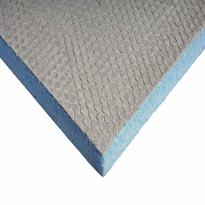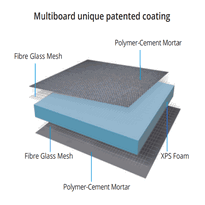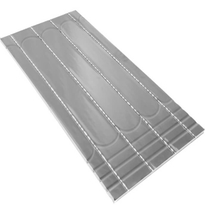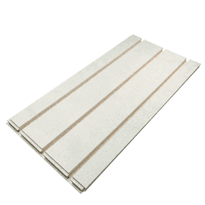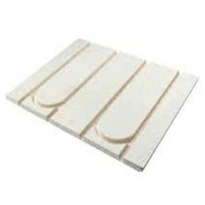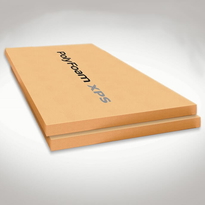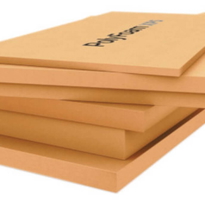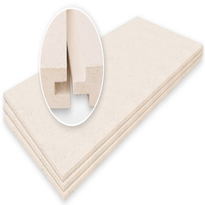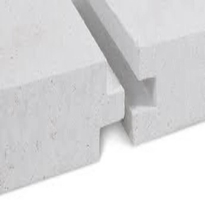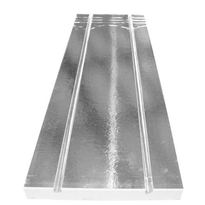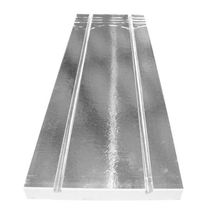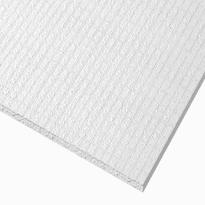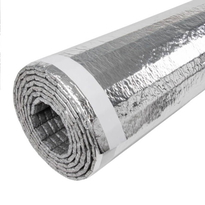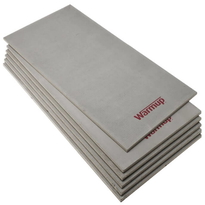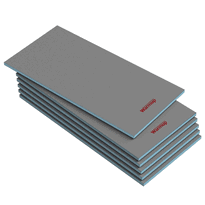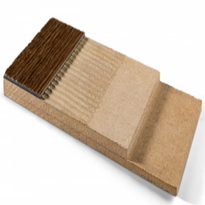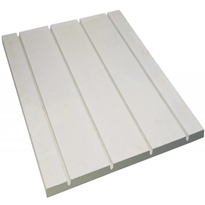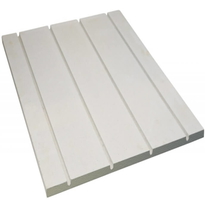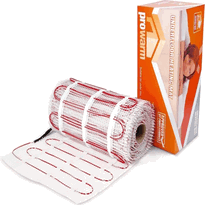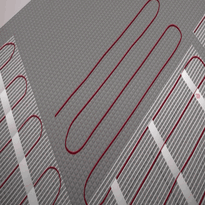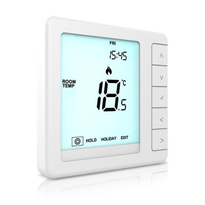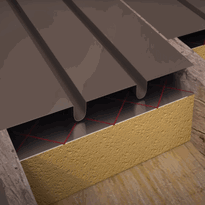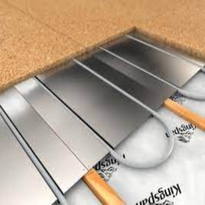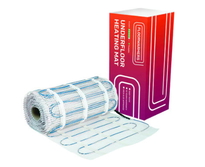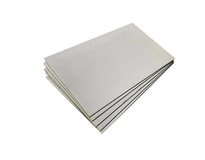Underfloor Heating Spreader Plates
Underfloor heating spreader plates are essential components designed to secure pipe positions and promote efficient heat distribution across a variety of flooring types. Typically manufactured from aluminium due to its excellent thermal conductivity, these plates feature grooved designs that firmly hold pipes in place, reducing movement and ensuring consistent heat transfer. They are suitable for suspended floors and support the installation of different floor coverings such as tiles, vinyl, or hardwood. Proper utilisation and appropriate spacing of these plates optimise system performance and extend the lifespan of the underfloor heating system. Continued exploration and correct application of these components are vital for achieving effective and energy-efficient heating solutions.
Material and Design Features of Spreader Plates
The material and design features of spreader plates are pivotal in determining the overall efficiency and performance of underfloor heating systems. Aluminium is predominantly utilised due to its excellent thermal conductivity, which facilitates rapid and even heat transfer from the pipes to the floor. The thickness of aluminium plates is carefully selected to optimise heat conduction while providing sufficient structural support. [Aluminium's durability and corrosion resistance also contribute to long-term system reliability. Many spreader plates are engineered with grooves—either single or double—designed to securely hold the pipes in place. This helps promote uniform heat distribution and ensures stability during installation. The support function of the plates maintains accurate pipe positioning, reducing movement that could lead to uneven heating or heat loss. Furthermore, the design of spreader plates enhances thermal efficiency by minimising downward heat loss, often referred to as backloss. Their versatile design allows for installation across various floor types, including suspended timber floors, making them adaptable to different building specifications. Durability and corrosion resistance are key attributes of these plates, ensuring long-term reliability of the heating system and consistent performance over its lifespan. This combination of material properties and thoughtful design features contributes significantly to the effectiveness and sustainability of underfloor heating installations.
Installation Steps for Underfloor Heating Systems
Installing an underfloor heating system requires meticulous planning and precise execution to ensure optimal performance and durability. Proper preparation begins with assessing the subfloor for debris, ensuring adequate electrical capacity, planning the layout to achieve uniform coverage, choosing suitable insulation materials, and preparing your workspace by clearing the area.
When installing the heating mat or cable, it is essential to secure it firmly using appropriate fasteners such as staples or specialised fastenings designed for underfloor heating systems. Conduct a dry run to verify the layout and fit of the system components before fixing them in place. Routes for the power leads should be carefully planned and secured to the electrical connection box, ensuring a safe and neat installation.
Protection of the system during the ongoing construction phase is critical; cover the installed components with suitable protective materials to prevent damage from trades or foot traffic. Once the system is laid, all electrical connections must be checked and tested for continuity and correct resistance values, using a multimeter, to confirm system integrity.
Embedding the heating system within the floor involves embedding it in a layer of mortar or screed—this protects the elements and provides an even surface for the final floor covering. It is vital to recess splices into suitable boxes or chambers to prevent movement or damage. Additionally, installing nail plates where the system crosses joists or other structural elements helps safeguard against accidental damage during subsequent construction activities.
The final stages include conducting resistance tests to verify the entire installation is functioning correctly and ensuring all connections meet safety standards. Once approved, the system can be properly covered with the chosen floor finish, maintaining the integrity and efficiency of the underfloor heating setup.
Calculating the Perfect Fit: Dimensions and Spacing
Accurate calculation of the dimensions and spacing for spreader plates is crucial to ensure optimal efficiency and uniform heat distribution within an underfloor heating system.
Typically, the width of plates is 390mm, with a standard length of 1000mm and a thickness of around 0.5mm. These specifications provide a stable base for pipe placement and help maintain structural integrity.
Each plate covers approximately 0.39m².
Grooves are usually spaced at centres such as 133mm, 150mm, or 200mm, tailored to accommodate pipes spaced at 200mm apart. This precise spacing ensures even heat distribution across the entire area.
Maintaining a 10mm expansion gap between plates is recommended to allow for thermal movement. The grooves are specifically designed to securely clip Pert-Al-Pert pipes (15mm or 16mm), ensuring stability during heating cycles. Proper planning in terms of insulation and condensate pipe lagging can help prevent cold spots and improve overall thermal efficiency.
Proper alignment is also essential; plates should be flush to prevent overlaps that can cause noise or uneven heating.
It's important to leave sufficient clearance from walls, allowing space for pipe bending and ensuring ease of installation.
Securing the plates firmly is vital for a stable setup. Using staples, nails, or screws helps keep the plates in position, reducing movement during operation and ensuring a consistent, reliable system.
Proper planning and attention to these dimensions and spacing guidelines will contribute significantly to a successful underfloor heating installation.
Compatibility with Different Floor Types and Coverings
The compatibility of underfloor heating systems with various floor types depends on their physical and thermal properties, which influence heat transfer efficiency and durability. Thin materials such as vinyl and linoleum facilitate effective heat transfer because of their low resistance, making them suitable for underfloor heating. Tile and natural stone flooring are excellent conductors of heat, ensuring consistent warmth across the surface. Material choices significantly impact the overall efficiency and longevity of the heating system.
Spreader plates can be used with laminate and hardwood flooring, promoting even heat distribution and preventing temperature fluctuations. For suspended flooring systems, these plates enable efficient transfer of heat to the underside of wooden floorboards. Typically, carpeted flooring isn't recommended unless the carpet is specially designed for use with underfloor heating, to prevent heat retention issues.
Proper installation is essential; this includes adequate insulation and ensuring the plates are securely positioned. These measures help optimise performance across diverse materials, taking into account factors such as thermal conductivity and thickness to guarantee energy efficiency and long-lasting operation.
Benefits and Advantages of Using Spreader Plates
Spreader plates offer numerous significant benefits that enhance the performance and efficiency of underfloor heating systems. They facilitate even heat distribution across the entire floor surface, thereby reducing hot and cold spots and ensuring consistent comfort throughout the space. Designed for suspended floor projects, their excellent thermal conductivity aids efficient heat transfer from the pipes to the floor covering, supporting an effective heating environment. The customised design of spreader plates allows for precise installation tailored to room dimensions, which improves coverage and overall system performance. They also contribute to improved energy efficiency by minimising downward heat loss and directing more warmth upward, leading to lower operating costs and quicker response times for the heating system. Furthermore, spreader plates help dampen operational noise and vibrations, making indoor environments quieter and more comfortable. Their straightforward installation process, compatibility with various flooring types, and ability to maintain existing floor heights make them a practical and reliable solution for both new builds and retrofit projects. Utilizing insulation materials alongside spreader plates can further enhance overall thermal performance and energy savings in your underfloor heating setup.
Conclusion
Incorporating spreader plates into underfloor heating systems enhances the even distribution of heat, improves installation stability, and provides greater flexibility across a range of flooring types. Selecting suitable materials and adhering to precise spacing and dimension guidelines are essential to ensure optimal performance and durability. Proper installation, compatible with various flooring coverings, reduces the risk of issues such as uneven heating or damage. Overall, the utilisation of spreader plates offers a practical and reliable solution that maximises system efficiency and longevity, while allowing for seamless integration within existing building configurations.
